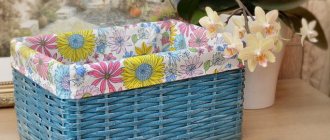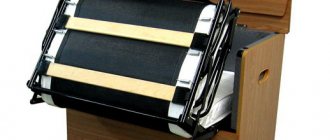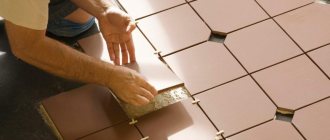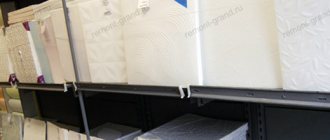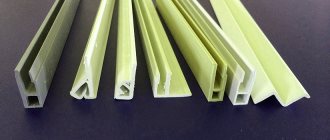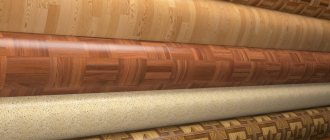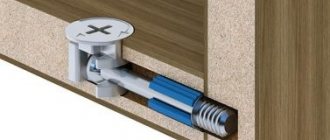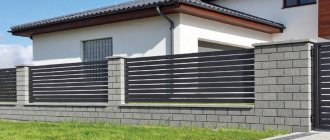Structure of epoxy resin - the condensation product of epichlorohydrin with bisphenol A, n = 0-25
Epoxy resin
— oligomers containing epoxy groups and capable of forming cross-linked polymers under the influence of hardeners (polyamines, etc.). The most common epoxy resins are products of polycondensation of epichlorohydrin with phenols, most often with bisphenol A. Resins based on bisphenol A are often called epoxy-diane in honor of the Russian chemist A.P. Dianin, who first obtained bisphenol A [1].
Purpose and characteristics of glue
Two-component EDP adhesive is a universal mixture consisting of epoxy resin and several components as improvers. The hardener required for polymerization is included separately.
Before starting work, the components are mixed according to the specified proportions. Then the hardener is introduced, which is necessary to start the chemical reaction, after which the glue begins to harden.
The release form provides glue in syringes or bottles, but this does not have any effect on the properties of the mixture. It is most convenient to use the product in a syringe, as it can be accurately measured and applied.
The adhesive is adapted for the following materials:
- metals and alloys;
- glass surfaces;
- wooden products;
- porcelain;
- ceramics;
- decorative facing materials.
It is prohibited to apply glue to objects that have direct contact with food! Glass fabrics, fiberglass, sawdust, paper and fabrics are well saturated with the adhesive composition.
In the future, they are used in the automotive industry (car bumpers), shipbuilding, in everyday life and various types of modeling.
The epoxy composition EDP has proven itself well in repairing interior parts, furniture, audio and electrical equipment, repairing plumbing fixtures for baths and toilets, and sports equipment.
Epoxy adhesive characteristics
Epoxy adhesives have the following advantages:
- They can glue dissimilar materials and thereby eliminate galvanic corrosion.
- Curing can be carried out at low temperatures, most often at room temperature.
- Good bonding of materials that are difficult to bond, such as glass, can be obtained.
- Most often, curing is carried out without applying pressure, since almost no volatile substances are released during curing.
- Hermetic and chemical-resistant compounds can be obtained.
- The strength of the adhesive layer does not depend on its thickness within a fairly wide range.
In addition to the rather high cost and production difficulties, epoxy adhesives have the following disadvantages:
- To obtain good adhesion, careful surface preparation is required.
- Good joint design is required to obtain high strength.
- Impact strength is low, especially for materials intended to operate at elevated temperatures.
Epoxy compositions can be used for bonding metals, dissimilar materials and porous structures
Epoxy adhesives are used in a number of specialty industries to bond metal to plastic, most commonly polyester or phenolic plastics to aluminum or steel. The amount of materials that are glued together is quite significant. For example, the same composition can be used to glue together polyester film, aluminum, copper, iron, magnesium alloys, copper wire insulated with plastic, rubber and silver-plated bronze.
Recipes for some epoxy adhesives are given in the table (all substances are indicated in parts by weight).
| Substance | Glue recipe number | |||
| 1 | 2 | 3 | 4 | |
| ED-5, ED-6, ED-37 | 100 | 100 | 100 | 100 |
| Dibutyl phthalate (plasticizer) | 15-20 | 15-20 | 15-20 | 10-15 |
| Polyethylenepolyamine (hardened) | 7-9 | 7-9 | 7-9 | 7-9 |
| Iron filings | 100-150 | — | — | — |
| Aluminum powder | — | 5-10 | — | — |
| Portland cement | — | — | 30-40 | — |
Properties and technical specifications
Let's consider the main properties of the EDP brand:
- good strength against any mechanical impact;
- slight shrinkage;
- good adhesion properties relative to other materials;
- does not conduct current;
- moisture resistant.
“After the mixture has hardened, you can continue to work with it. It can be sanded, polished, drilled, painted, and also sawed.
If necessary, various pigments are mixed into the epoxy composition before it hardens and then the adhesive mass is finally formed.
When maintaining a temperature of 18-25C and introducing a thickener, EDP epoxy adhesive remains active for four hours.
A shear strength index of 8 MPa (given based on metal bonding) is a good indicator for the composition.
What temperature can the glue withstand?
Separately, it is worth mentioning the temperature regime at which the glue is able to retain all its properties. Even to work normally with a substance, it must be heated. Operating temperature is about seventy degrees.
Advice
To heat the resin, the container with it must be placed in a basin filled with water at the appropriate temperature.
- The maximum temperature for glue is plus two hundred and fifty degrees.
- The lowest is minus twenty.
This stability is one of the reasons why epoxy adhesive is used not only in domestic conditions, but also in the production of cars, the construction of aircraft, ships and bridges.
We recommend: How to work with epoxy resin correctly and safely?
Preparation of the adhesive composition
The instructions provided indicate that the EAF is prepared exclusively before starting work. Mixing occurs at a ratio of 10:1 (epoxy resin to hardener).
To properly prepare the adhesive composition you need:
- heat the bottle with resin to a temperature of 50-70C, lowering it into warm water;
- wait ten minutes;
- use the glue components in small proportions, taking ten parts of resin per one measuring part of the thickener, adhering to the paper scale on the jar;
- mix everything thoroughly for about 3-5 minutes;
- work with the composition within two hours from the moment of preparation, otherwise it will thicken and the quality of the seam will be spoiled.
Receiving[ | ]
Scheme for the production of liquid epoxy resins by the batch method.
1 - reactor; 2, 6 - refrigerators; 3 - receiver; 4 - filters; 5 - apparatus for distilling toluene; 7 - collection[2]. Epoxy resin was first produced by the Swiss chemist Castan in 1936[1].
Epoxy resin is produced by polycondensation of epichlorohydrin
with various organic compounds: from phenol to edible oils, for example, soybean [
source not specified 1790 days
]. This method is called “epoxidation”.
Valuable grades of epoxy resins are obtained by the catalytic oxidation of unsaturated compounds. For example, this is how cycloaliphatic resins are obtained, valuable because they contain absolutely no hydroxyl groups and are therefore very hydroresistant, tracking- and arc-resistant.
For practical use of the resin, a hardener is needed. The hardener can be a polyfunctional amine or anhydride, sometimes an acid. Curing catalysts such as Lewis acids and tertiary amines, usually capped with a complexing agent such as pyridine, are also used. After mixing with a hardener, the epoxy resin can be cured - converted into a solid, infusible and insoluble state. If it is polyethylene polyamine (PEPA), then the resin will harden within a day at room temperature. Anhydride hardeners require 10 hours of time and heating to 180 °C in a heat chamber (and this does not take into account cascade heating from 150 °C).
Filled
Additional components added to the adhesive mixture are needed primarily to improve the quality of the glue, but they are sold separately.
Plasticizers and pigments can act in this capacity. There is no need to dilute them; they are added dry, since even a little water can immediately ruin the adhesive mixture.
Before introducing components, you should carefully study them and add them strictly according to the instructions. In order for the adhesive to maintain its ductility, additives should not account for more than ten to twenty percent of the total mass of EDP epoxy adhesive.
How to properly dilute glue with hardener?
Contact with the hardener is necessary to initiate the polymerization process and transform the liquid into a solid. The exception is one-component formulations, which do not require dilution. The one-component adhesive contains solvents that keep it in a liquid state until it is exposed to air. After applying the one-component composition to the bonding site, volatile solvents quickly evaporate, leading to hardening.
In contrast, two-component polymerization agents require special curing additives. They are mixed with the main mass to a homogeneous consistency and left to harden.
Mixing by eye
Often, craftsmen working with epoxy glue remember the ratio of components and stop using measuring utensils, measuring the components by eye. However, with this approach it is easy to make a mistake and disrupt the ratio of components by adding too much or, conversely, not enough hardening liquid.
The first leads to rapid boiling of the mass and its rapid polymerization. In the second case, the adhesive does not harden or hardens much longer than usual, which is inconvenient to work with and can cause displacement of the parts being glued relative to each other.
In both cases, both the appearance and the strength of the resulting seam suffer. For these reasons, it is recommended that you follow the instructions exactly and carefully measure the volume of adhesive and curing agent.
Proportions of resin and hardener
The proportions of resin and hardener vary depending on the brand of adhesive. This information is usually indicated on its packaging or in the attached instructions. Some manufacturers package the components in the correct proportions in special double syringes, one part of which contains glue and the other part contains a hardening liquid. In this case, there is no need to maintain proportions: the components are simply squeezed out in the required quantities into some container and mixed.
The same can be said about dense varieties of epoxy compounds. They are in bars of the required volume, which you just need to knead well with your hands, like plasticine.
If the base and hardener are sold in regular bottles, then before mixing they will have to be measured in the indicated proportions. They may be different. For example, one of the cheapest varieties of universal construction epoxy adhesive EDP has a ratio of the main component and hardener of 10:1 or 10:1.3. Other brands require different ratios, for example, 1:5, so before starting work you must carefully study the instructions for use of a particular adhesive.
Determining the required volume
It is convenient to measure the required volume of base liquid and hardener using a graduated measuring cup, or with a syringe for small portions. Each component requires a separate container or syringe.
When the glue has a resin or gel consistency, it can be difficult to draw it through the syringe tip even with the needle removed. In this situation, the piston should be pulled out of the body and the composition should be poured through its wide upper part, having previously plugged the tip of the syringe with a match or toothpick. The piston is then carefully inserted into the housing. The hardener is usually more liquid and can be drawn into the syringe in the usual way.
For another method of measuring, you will need electronic jewelry scales. The technique is simple: place the container in which you plan to mix the glue on the scale, and pour the required amount of the main component, adjusted for its weight. Then the hardener is added to the same container. The scale will show how much liquid needs to be added.
Applying glue
When using fabric as a reinforcement layer, it is applied to the surface to be repaired and then evenly covered with a layer of adhesive. Reapplying the layer, if required, is possible after twelve to twenty minutes.
“Without laying the adhesive fabric, the adhesive is applied in a thin layer on both surfaces to be joined. Then they are firmly fixed with a vice or other heavy objects.
The remaining glue should be removed immediately, as it will be difficult to do this later after it has hardened.
Leave the items fixed until completely hardened.
What is resin used for?
Epoxy material is used very widely. After all, the characteristics of epoxy resin allow it to be used in a wide variety of conditions. As an example, the following areas of application of resin can be cited:
- It is excellent for gluing fiberglass fabrics. Epoxy resin temperatures can reach high values. Therefore, the material is used in the automotive industry, the aviation industry, and the electrical industry. Therefore, glass cloth for epoxy resin is an ideal material;
- epoxy resin proportions must be observed in the above volume. In this case, the material is excellent as a moisture barrier;
- The epoxy hardener creates properties that make the resin an ideal option for treating coatings with a high level of chemical resistance. Epoxy resin characteristics can significantly increase the strength of structures;
- fiberglass fabric for epoxy resin makes it possible to produce various products from fiberglass;
- Epoxy resin temperature allows the material to be widely used for various household purposes and for the manufacture of design projects.
Transportation and storage
EDP glue is transported only in accordance with the rules specified by GOST. The storage area must be dry.
Storage temperature ranges from +5 to +30C for original packaging. Protect from moisture and direct sunlight. Store for no more than two years.
Use in excess of storage standards is allowed, but the quality may be reduced.
Fast curing EDP adhesive
EDP glue is sold in containers of 45/250 grams and is two-component. The first container contains the epoxy resin and additional components directly, and the second container contains the thickener.
The adhesive is intended for the following works:
- gluing composite and metal objects and alloys, ceramic, glass and other materials;
- repair and sealing of items;
- correction of defects, elimination of cracks and chips.
“Because the epoxy compound cures quickly, it is used as an analogue of cold welding.”
Epoxy glue application
Bonding with epoxy glue
There are a number of uses for epoxy adhesives in aerospace applications, the most common of which is bonding dissimilar materials, such as bonding solar panels on satellites or bonding copper foil to phenolic plastic to make printed circuits.
Reinforcement with epoxy glue
In addition, epoxy resins are used quite widely to strengthen precious stones in settings.
Epoxy glue as a filler
Epoxy adhesives can be used to bind almost any type of filler, and the amount of epoxy in this case in the resulting material is extremely small; the epoxy only serves to coat the filler particles and binds them firmly at the points of contact. As sawdust binders, they are used to make sculptures and bas-reliefs. Decorative porous compositions can be obtained by using epoxies to bind sea pebbles.
Epoxy glue as primer
Epoxy compositions, usually used as solutions, can be used as primers to create good adhesion of the outer coating to the product or to increase corrosion resistance. A typical application for this type of plan is to create a primer coat over old alkyd paint before applying a new coat of the same paint.
Such epoxy primers are also used to create intermediate coatings on concrete so that new layers of concrete adhere well to old concrete.
Good adhesion of epoxy glue to:
Epoxy glue for plastic
Epoxy resins have good adhesion to all thermosetting plastics, except organosilicon, and to most thermoplastics, except polyolefins, fluoroplastic and some plasticized venyls.
Epoxies are widely used for bonding polyester laminates, for example in the production of fuel tanks on military aircraft and in the repair of ships made from polyester fiberglass. Special adhesives are used for gluing fluoroplastic gaskets, for gluing nylon-phenol coatings on missile heads, etc. Hot steam-resistant adhesives have been developed for gluing cellophane.
Epoxy glass adhesive
Epoxy adhesives can have good adhesion to glass and make it possible to produce epoxy fiberglass plastics.

